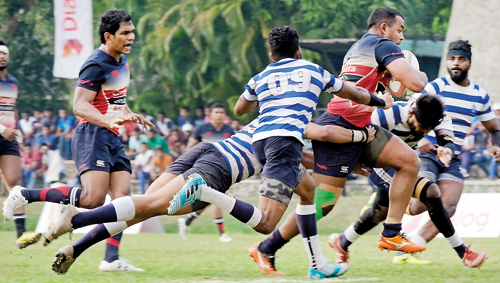Too many obvious eventualities!

- Is the rugby knockout losing its sheen
It was incredible to score 3 tries, having not managed 1 against England since 2004. The feature was that, the Scots took the game to their opponents from the kick-off. What rattled the English was the ferocity of the Scots defense and the quick ball in attack, fashioned at the breakdown. Historical Rugby for the Scots and jubilation at Murrayfield, as Rugby matched the expectations of the Scottish supporters. This is shooting up the resurgence of Rugby for the bagpipers. It was revelation time for England who have had tremendous success, as they head for the World Cup next year. The loss was real.
Later, on Sunday, in Colombo, it was the Clifford Cup final between Kandy and Navy, with Australian Sam Jones in-charge. Jones had built a reputation of letting the game flow, as he did in the previous games. In between whispers about the Cabinet reshuffle, people yawned with less continuity, making the final a lackluster event.
Players opted for slowing down as they went into contact and made mistakes. Kandy dropped the ball about 7 times in the 1st half, and followed suit in the 2nd. Navy caught the infection while they narrowed the scores to 7-8, within minutes of the 2nd half, capitalising on a Kandy error. But, when within scoring distance, they lost the advantage, losing the ball in contact. The end result was Kandy annexing the Clifford Cup, beating Navy, to make a double this season. The score of 21-7 speaks little of a final. This was a game between No1. and No.2, based on the League standings. The pundits hyped this match as a reflection of local Rugby. What they forget is the gap that existed between the two teams as well as 3rd-placed Havelocks. Despite the gap, this being a Knockout final, anything could have happened. Some thought it may be like the elections, an upset, as Rugby in Sri Lanka is a pastime for many politicians.
Kandy went into halftime with a paltry lead, when they should have had a more comfortable one. It seemed they had reached a plateau. I could not understand the reluctance to kick penalties and size up the board, which would have been a psychological advantage. It was important to score points, as they were more likely to lose the ball in contact, as the first 20 minutes showed. Leading 5-0, Kandy opted to work the ball, than take a kick at goal, and probably look for a better lead, but lost the ball on contact. The third time around they opted for points, which helped them to a halftime lead of 8-0. They virtually paid the price, as Navy scored on resumption, taking advantage of a Kandy mistake and scored to narrow the scores to 7-8. The infection then spread to the Navy who busted the chance of leading, as they had caught the infection of losing the ball in contact.
All this while, Fazil Marija, who was making his last appearance for Kandy, trying to create space. I doubt this match was a memorable send off. On the other hand, it was a moral victory for Navy who had only a few big names to boast of, losing many regulars who crossed over. Coach Mothilal Jayatilleke must be proud of himself, having brought Navy to be 2nd in both forms of XVs, having previously won the 7s.
While people tend to blame referees for less continuity of the game, the question that should be asked is why the game had little continuity, despite the refereeing style of Jones. To me the breakdown looked tattered, as players dropped the ball in contact or, dropped over the players, in what we call “going over”. Or they tried to bend the laws by keeping their hands on the ball until the referee tells them “hands off”. That did not appear forthcoming, as Jones threw the penalty as the law, as it is now, encourages quick ball.
 What was happening was the second player arriving on the defending side immediately putting their hands on the ball, despite knowing the Ruck has formed. That is important, as the Ruck law trials since August 2017 say.
What was happening was the second player arriving on the defending side immediately putting their hands on the ball, despite knowing the Ruck has formed. That is important, as the Ruck law trials since August 2017 say.
“A Ruck commences when at least 1 player is on his feet and over the ball which is on the ground (tackled player, tackler). At this point, the offside line is created. A player on his feet may pick up the ball, as long as this is immediate. As soon as an opposition player arrives, no hands can be used. This is the difference against the law book, which talks about the formation of a Ruck when a player of each team is in contact.”
With the Schools season not far off, this needs to be understood, as definitely otherwise, the confusion can result in chaos. The other issue were the lazy “rollers” and the forwards at Rucks falling to ground in the “tackle”, not making much effort to roll away. Inevitably, this causes a slower ball. Put all these together and what do we have for the national team, if our best Clubs play this way.
Vimal Perera is a former Rugby Referee, Coach and an Accredited Referees’ Evaluator IRB


